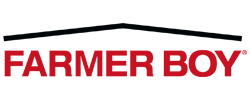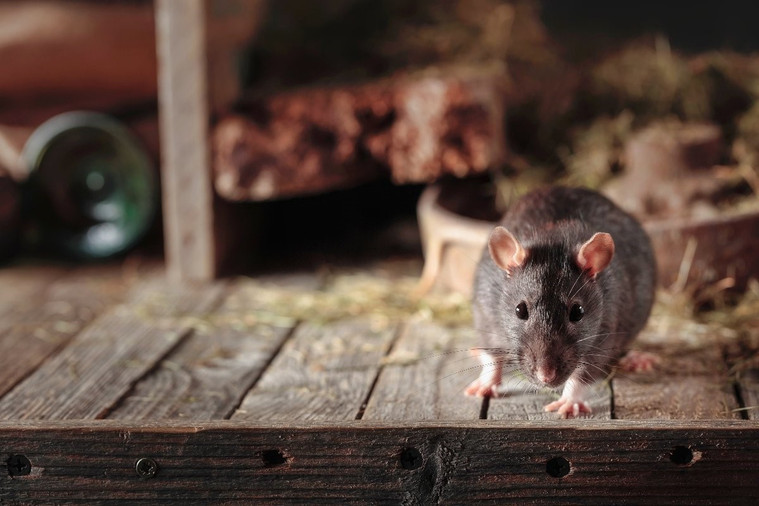A Balanced Approach to Farm Pest Management
Posted by Farmer Boy on Jun 19, 2025
Protecting Your Livestock with Effective Pest Management
Pest management is a year-round challenge for livestock farmers. Pests not only harm animals but also disrupt production and lead to financial losses. While there are many ways to combat pests, an integrated approach is often the most effective and sustainable.
This blog will explore Integrated Pest Management (IPM) strategies, combining proactive measures and various control methods to manage pest threats on your farm.
The Importance of Integrated Pest Management
Effective pest control is crucial for maintaining animal health and productivity while minimizing negative environmental effects. Pests like flies, ticks, and internal parasites can cause significant stress, spread diseases, and reduce weight gain or milk production in livestock.
An IPM strategy provides a balanced framework. Over-reliance on any single method can lead to issues like:
- Potential for residues in animal products
- Harm to beneficial insects
- Water source contamination
- Development of pesticide resistance
IPM aims to mitigate these risks by using a combination of techniques. It emphasizes prevention and monitoring, reserving interventions like chemical treatments for situations where pest levels reach thresholds that significantly impact animal health or productivity.
Understanding Seasonal Pest Cycles
Pest problems vary with the season, so understanding seasonal pest cycles is key to proactive pest management.
- Winter: Rodents seek shelter indoors, threatening livestock and farm infrastructure. Lice and mites can also infest animals. To prevent problems, keep feed storage areas clean and sealed, ensure animal shelters are dry and warm, and regularly inspect for signs of damage or infestation.
- Spring: Warmer weather brings ticks, flies, and mosquitos, which can transmit diseases and reduce grazing efficiency. Consider preventative treatments, set fly traps, and remove standing water to prevent mosquito breeding. Automated watering systems can also help eliminate mosquito breeding grounds by reducing spillage and standing water.
- Summer: Flies and mosquitos are most prevalent, transmitting diseases, agitating animals, and causing production drops. Repellents, fly traps, rotational grazing, and targeted insecticide applications (if needed based on monitoring) can help.
- Fall: Flies, ticks, and rodents remain problematic. Continue using traps, baits, and other necessary control measures identified earlier in the year.
Integrated Pest Management Strategies
Integrated Pest Management represents a highly effective strategy for controlling pests on livestock farms because it takes a comprehensive, ecosystem-based approach. IPM prioritizes prevention and monitoring, using interventions only when pest populations reach levels that warrant action, known as action thresholds. It combines multiple control tactics:
- Cultural Controls: Practices like sanitation, proper manure management, and rotational grazing help disrupt pest cycles and prevent buildup.
- Mechanical/Physical Controls: Using traps (sticky, snap, live), baits, and physical barriers targets specific pests directly.
- Biological Controls: Introducing or encouraging natural predators or beneficial insects can help manage certain pest populations.
- Chemical Controls: When necessary and used according to label instructions, approved pesticides and insecticides can effectively reduce high pest populations that exceed action thresholds. These should be integrated carefully with other methods.
Pest Control Tools and Solutions for Your IPM Plan
Strategically using pest control solutions is essential. An effective IPM plan incorporates various tools.
Non-Chemical Options:
- Flying insects: Sticky fly traps use visual attractants and bait to lure flies. Examples include Starbar® EZ Trap® and JT Eaton™ Stick-A-Fly® Traps.
- Rodents: Mechanical options like snap traps like JT Eaton Little Pete® or glue traps like JT Eaton™ STICK-EM® can be effective. Live traps offer a humane capture approach.
- Crawling insects: Various sticky traps can help monitor and control ants, ticks, and other crawling pests.
Chemical Options:
- Insecticides for Flies/Mosquitoes: When preventative measures aren't enough to control heavy fly or mosquito populations impacting livestock health, targeted application of insecticides like Starbar® Prolate/Lintox-Hd Insecticidal Spray can help quickly reduce pest populations.
- Rodenticides: In cases of heavy rodent infestation threatening feed stores or infrastructure, carefully placed rodenticides, like bait blocks, may be required as part of the IPM strategy.
The key is choosing the right tool for the specific situation based on monitoring and established action thresholds.
Monitoring Pest Populations
Early detection of pest infestations is crucial for minimizing costs and reducing stress on your farm. To maintain effective pest control, implement these monitoring strategies:
- Store records of pest locations and the date of their occurrence. This can help track possible yearly infestations.
- Place traps in areas to capture pests and detect potential infestations early. Maintain a record of trap expiration dates to keep track of when it’s time for replacements.
- Educate your staff to recognize signs of pest activity and to conduct regular inspections of potential hiding places.
Implement Your IPM Plan with Farmer Boy
Ready to implement a comprehensive Integrated Pest Management plan on your farm? Farmer Boy offers a wide range of solutions to support your strategy, from preventative tools and traps to effective chemical controls for when they are needed. Shop our pest control products to help build the right IPM program for your livestock operation!


